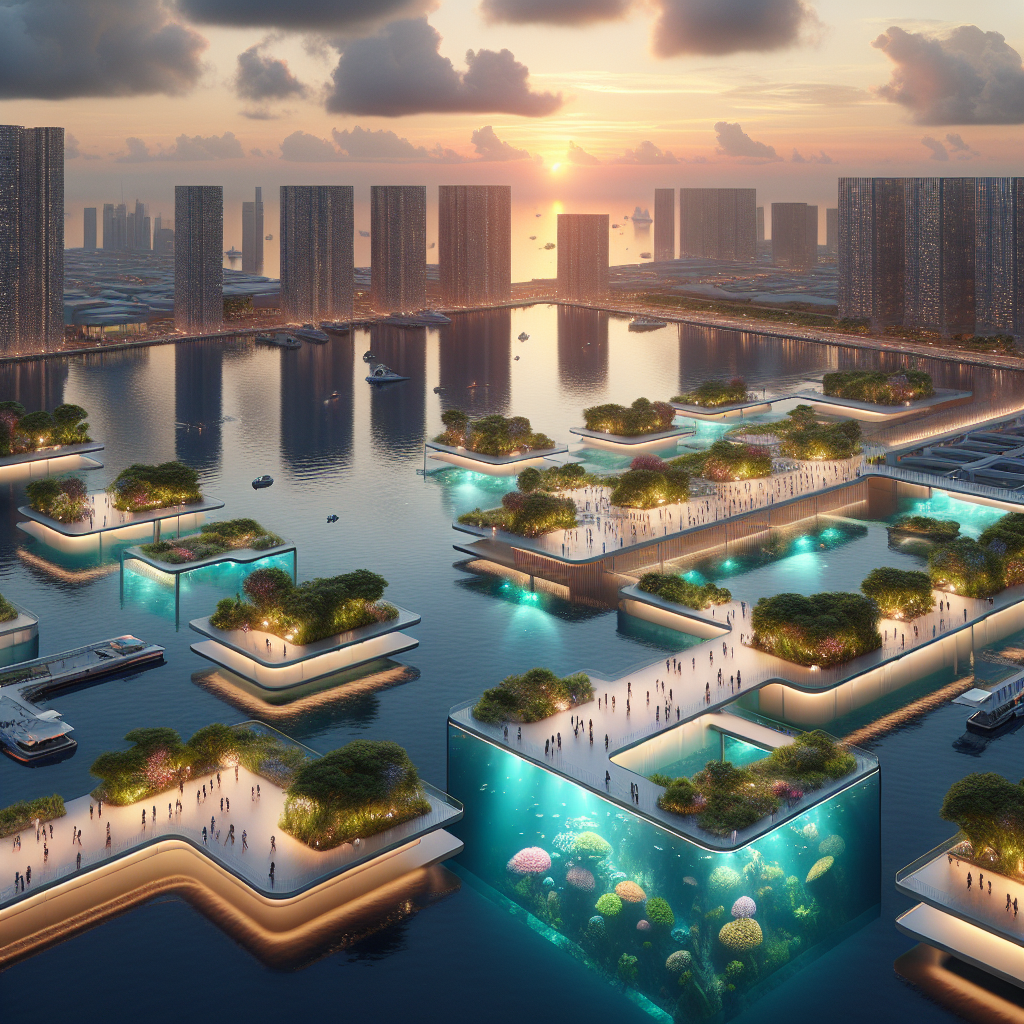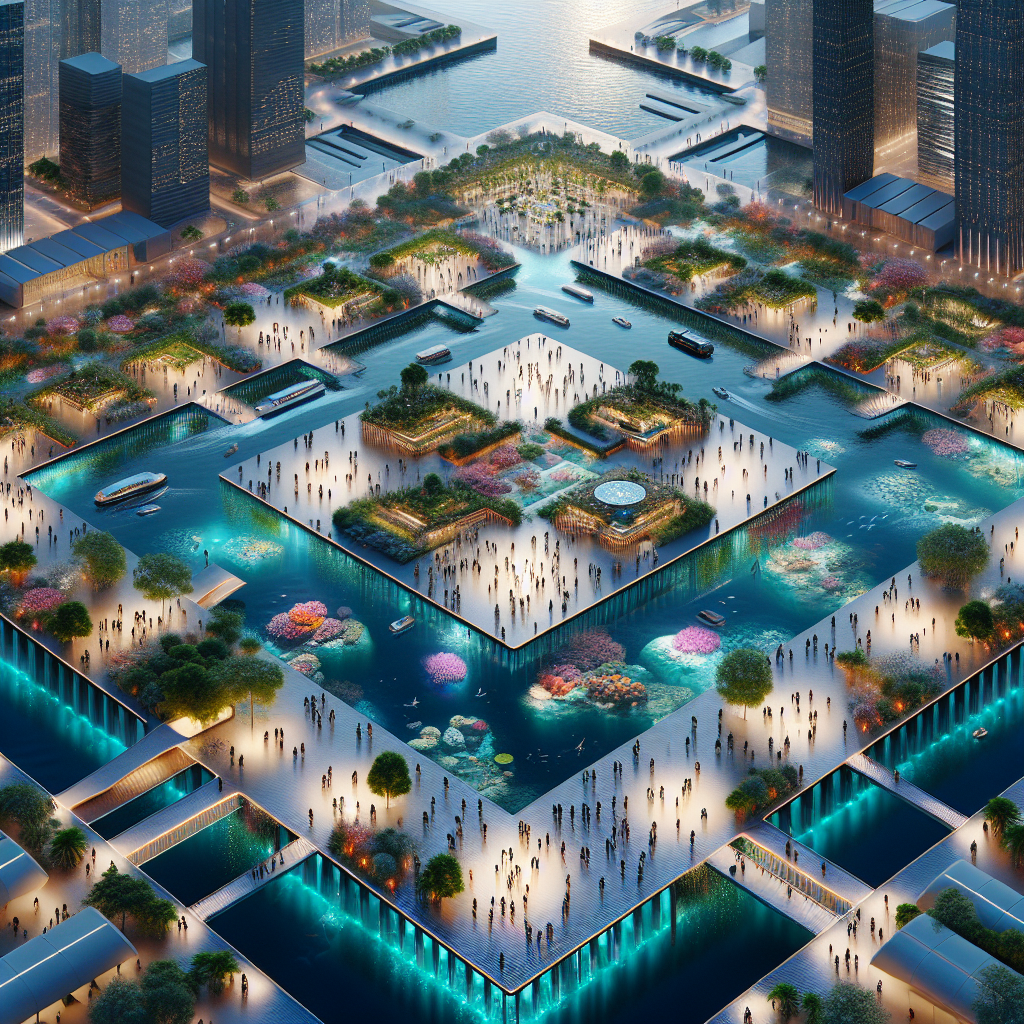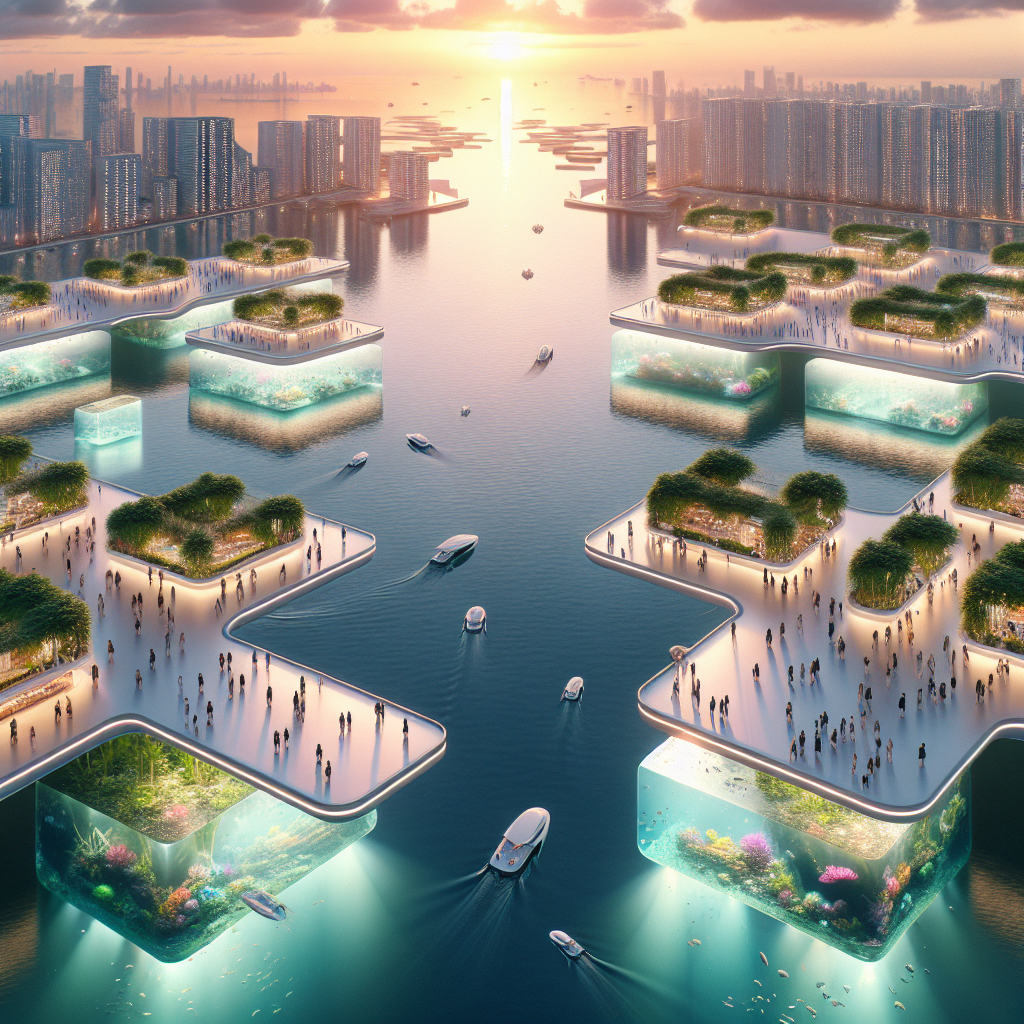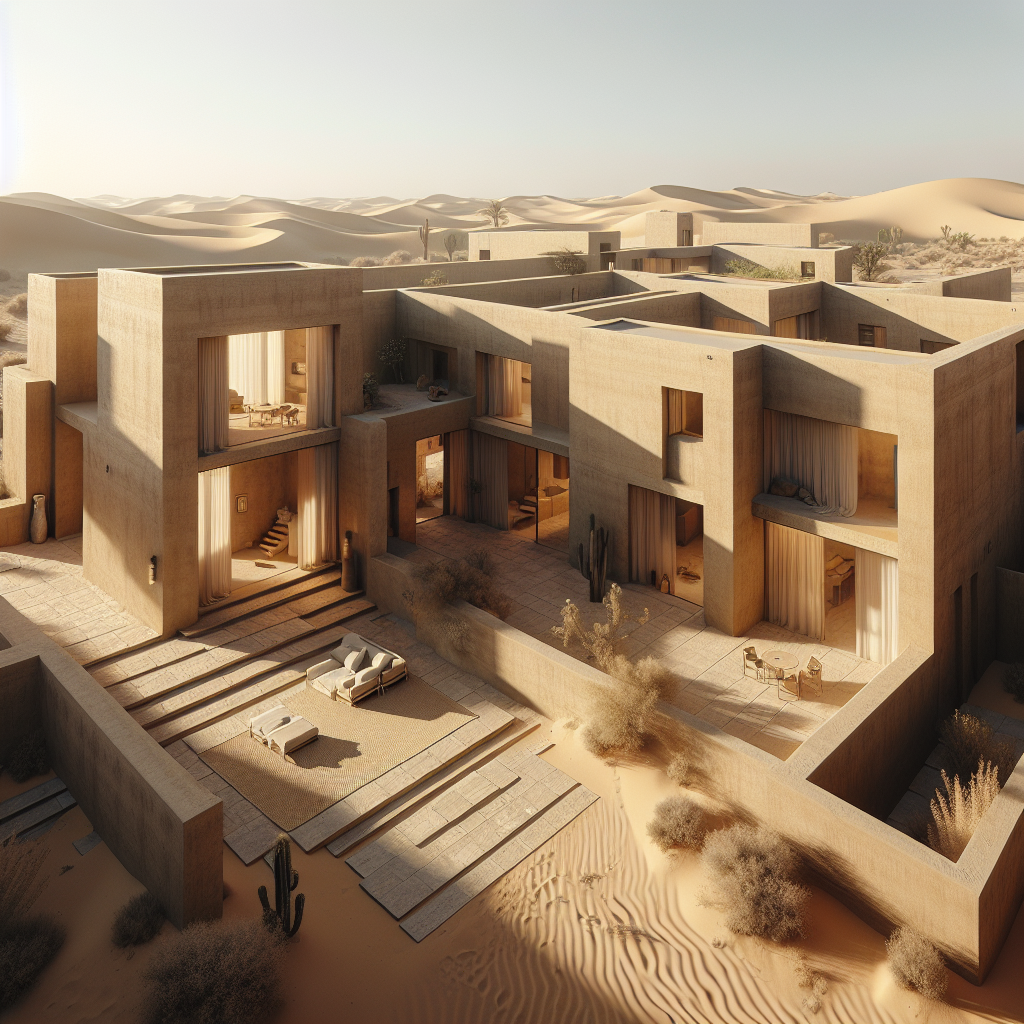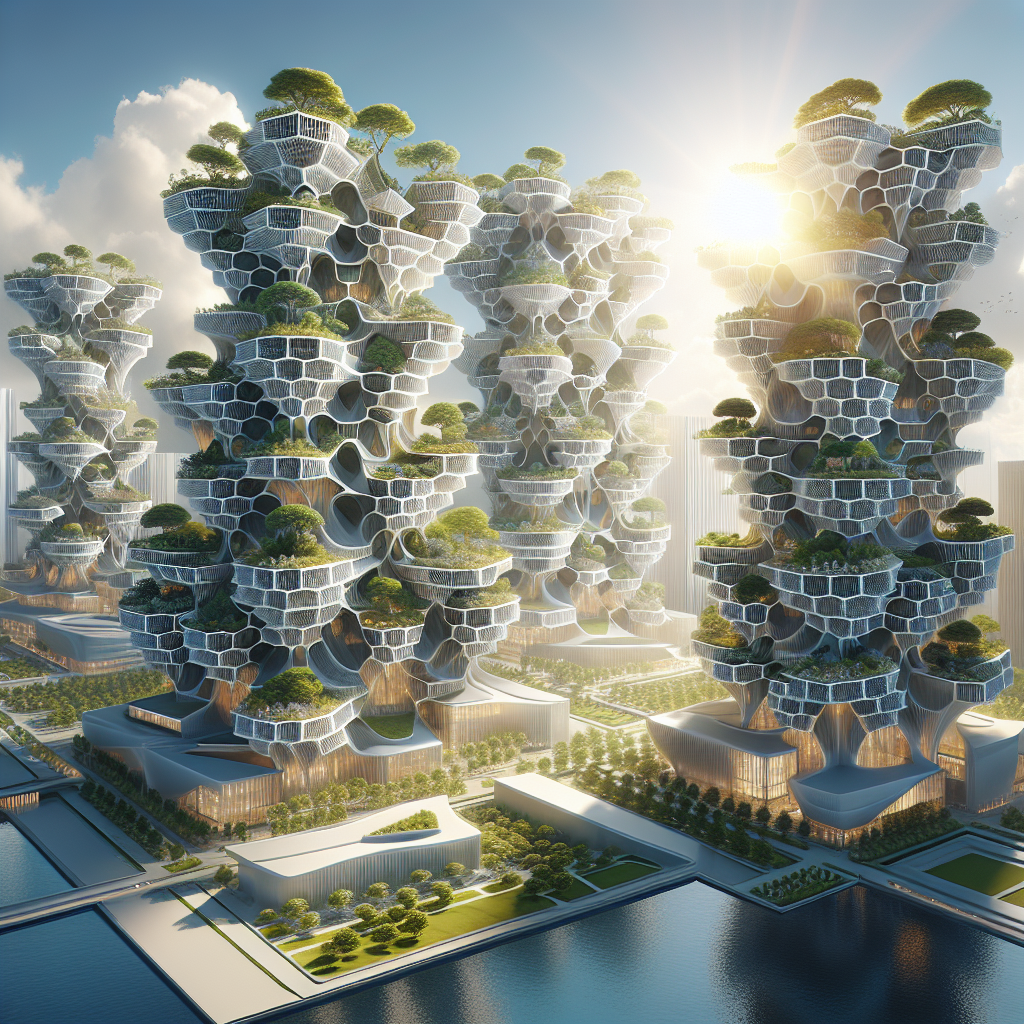Floating city squares: buoyant plazas for waterfront regeneration
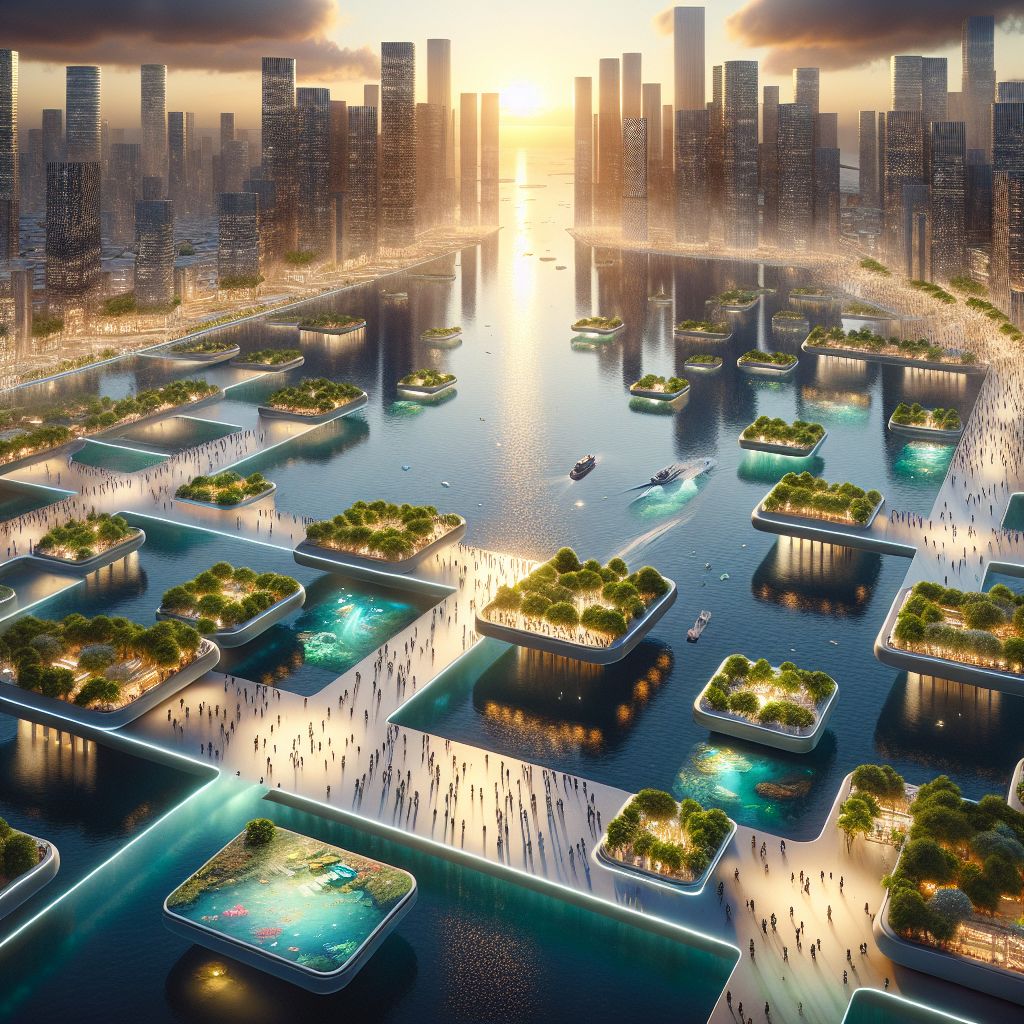
Floating City Squares: Buoyant Plazas for Waterfront Regeneration
As cities confront the twin challenges of rising sea levels and the scarcity of urban land, a new architectural frontier is emerging—one that literally floats. Floating city squares, or buoyant plazas, are redefining the way architects and urban planners envision waterfront regeneration. These modular, amphibious public spaces are not just feats of engineering; they are poetic responses to the climate crisis, merging resilience, adaptability, and beauty on the water’s surface.
The Rise of Amphibious Urbanism
Urban waterfronts have long been magnets for development, yet many have become victims of their own success—overbuilt, ecologically degraded, and vulnerable to flooding. The concept of floating architecture—structures designed to rest on water—has evolved from experimental prototypes into a legitimate urban strategy. From Copenhagen’s floating parks to Rotterdam’s floating pavilions, these projects demonstrate how design can coexist with aquatic ecosystems rather than displace them.
According to the Intergovernmental Panel on Climate Change, global sea levels are projected to rise by up to one meter by 2100. This reality has accelerated interest in adaptive design strategies that allow cities to expand into their waterways without compromising safety or sustainability. Floating city squares are among the most compelling of these innovations—public spaces that move with the tides, offering both flexibility and permanence.
Designing for Buoyancy and Belonging
Unlike traditional plazas, floating squares are dynamic. Their design must account for movement, weight distribution, and the constant interplay between water and structure. Architects are experimenting with modular pontoons made from recycled plastics, lightweight concrete, or even bio-based composites that support vegetation and human activity simultaneously. These platforms can be reconfigured seasonally, expanding or contracting based on community needs or environmental conditions.
Visually, these spaces evoke a serene balance between nature and technology. Imagine a floating plaza where reed-filled planters sway gently with the current, where LED-lit pathways trace the ripples of the water below, and where public art installations mirror the reflections of the skyline. The aesthetic is both futuristic and organic—an architectural choreography of light, texture, and motion. This interplay recalls the principles explored in floating architecture, where buoyant design becomes a metaphor for urban resilience.
Case Studies: From Rotterdam to Seoul
Rotterdam’s Floating Pavilion, designed by Deltasync and PublicDomain Architects, remains a seminal example. Completed in 2010, it comprises three interconnected domes that host exhibitions and events. The structure’s buoyant foundation adjusts naturally to fluctuating water levels, symbolizing the Dutch ethos of “living with water.” The pavilion has since inspired similar projects worldwide, including Seoul’s Sebitseom Islands—three luminous floating cultural hubs on the Han River that combine entertainment, dining, and ecological awareness.
In Copenhagen, the Floating Park by Studio Fokstrot and Marshall Blecher reimagines the city’s harbor as a network of micro-islands. Each island features native vegetation, timber decking, and flexible seating, inviting swimmers, kayakers, and pedestrians to engage with the water directly. The project’s modularity allows for seasonal rearrangement, reflecting a growing preference for adaptive public spaces that evolve with urban rhythms.
These examples underscore a shift in architectural thinking—from static monuments to living systems. As seen in projects discussed in net-zero design strategies, the emphasis is no longer on conquering nature but collaborating with it.
Ecological Integration and Blue Infrastructure
Floating city squares also serve as ecological catalysts. Beneath their decks, submerged habitats foster marine biodiversity, acting as artificial reefs that attract fish, mollusks, and aquatic plants. Some designs incorporate bio-reactive materials that filter pollutants, improving water quality in urban harbors. This dual function—public amenity above, ecosystem restoration below—embodies the ethos of biophilic design, which emphasizes human-nature connection in built environments.
In Singapore, the Marina Bay Floating Platform has evolved beyond its role as an event venue into a testbed for sustainable infrastructure. Future iterations aim to integrate solar panels, rainwater harvesting systems, and algae-based biofilters. Such hybrid systems align with the global movement toward blue-green infrastructure, a term describing the fusion of water management and ecological design to create resilient urban ecosystems.
Engineering Elegance: The Technology Behind the Tranquility
Behind the poetic calm of a floating plaza lies a sophisticated network of engineering systems. Anchoring mechanisms—ranging from flexible mooring lines to telescopic piles—allow the platforms to rise and fall with tides while maintaining stability. Advanced sensors monitor load distribution, wave impact, and structural integrity in real time, ensuring safety even during extreme weather events.
Materials innovation plays a crucial role. High-density polyethylene pontoons, fiber-reinforced polymers, and basalt-fiber composites are increasingly favored for their durability and low environmental footprint. Some experimental projects are exploring self-healing concrete infused with bacteria, a technology previously examined in self-healing infrastructure research. These materials promise longevity and reduced maintenance—critical factors for public installations exposed to harsh marine conditions.
Social and Cultural Dimensions
Beyond their technical sophistication, floating city squares represent a profound cultural shift. They redefine the notion of the public square—a civic heart that no longer needs to be anchored to solid ground. In coastal cities where land scarcity and flooding threaten traditional gathering spaces, buoyant plazas restore the social function of the urban commons. They host concerts, markets, and festivals that bring communities together on the water, transforming once-industrial waterfronts into vibrant cultural corridors.
In Tokyo Bay, proposals for floating cultural districts envision art galleries, performance spaces, and cafés drifting amid the skyline. The aesthetic recalls the fluid dynamism of Metabolist architecture, the postwar Japanese movement that imagined cities as living organisms capable of growth and transformation. Today’s floating squares extend that vision into the Anthropocene, where adaptability is not just desirable but essential.
Challenges and Future Directions
Despite their promise, floating city squares face regulatory, logistical, and environmental hurdles. Navigational safety, waste management, and long-term maintenance require new governance models that bridge maritime and urban planning frameworks. Moreover, the ecological impact of anchoring systems and human activity must be carefully monitored to prevent unintended harm to aquatic ecosystems.
Yet the momentum is undeniable. As the United Nations Human Settlements Programme (UN-Habitat) advocates for more climate-resilient cities, floating infrastructure is gaining traction as a viable adaptation strategy. Architects are increasingly collaborating with marine biologists, hydrologists, and community groups to ensure that these spaces serve both people and planet.
A Vision for the Amphibious City
Floating city squares encapsulate the future of urban design—fluid, inclusive, and ecologically attuned. They blur the boundaries between architecture and landscape, between permanence and impermanence. In doing so, they offer a blueprint for cities learning to live with water rather than against it.
As climate pressures reshape coastlines, these buoyant plazas will become more than architectural curiosities; they will be civic lifelines. Their shimmering surfaces will host not only gatherings and performances but also the collective imagination of a society adapting gracefully to change. In their reflection, we glimpse a new urban paradigm—one that floats, flexes, and flourishes with the tides.
Keywords: floating city squares, waterfront regeneration, floating architecture, amphibious urbanism, blue infrastructure, climate-resilient design, sustainable waterfronts
